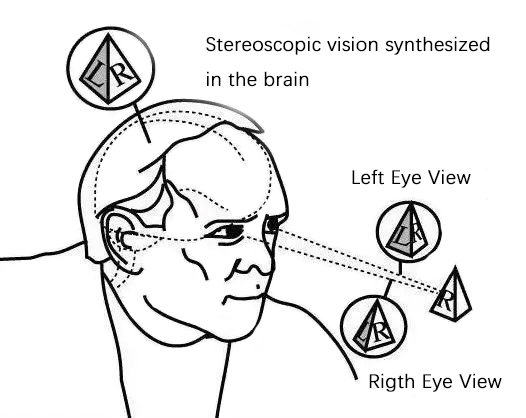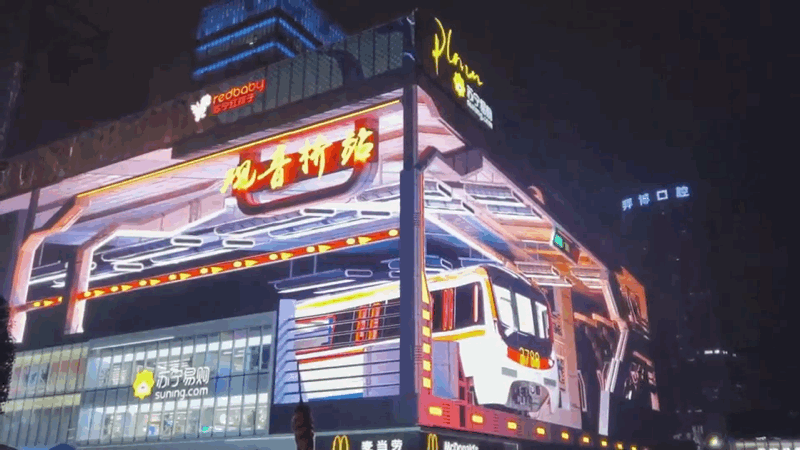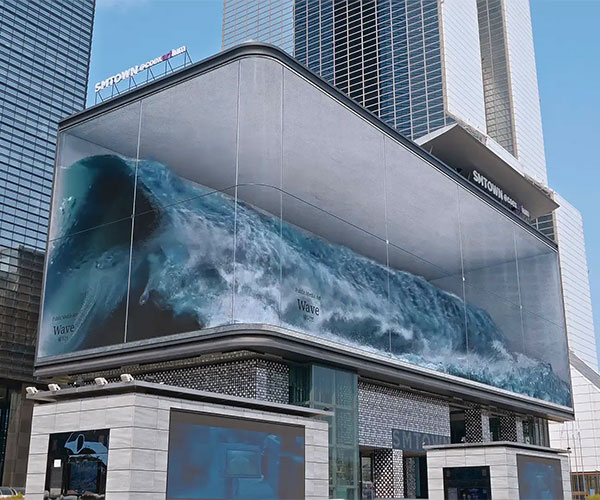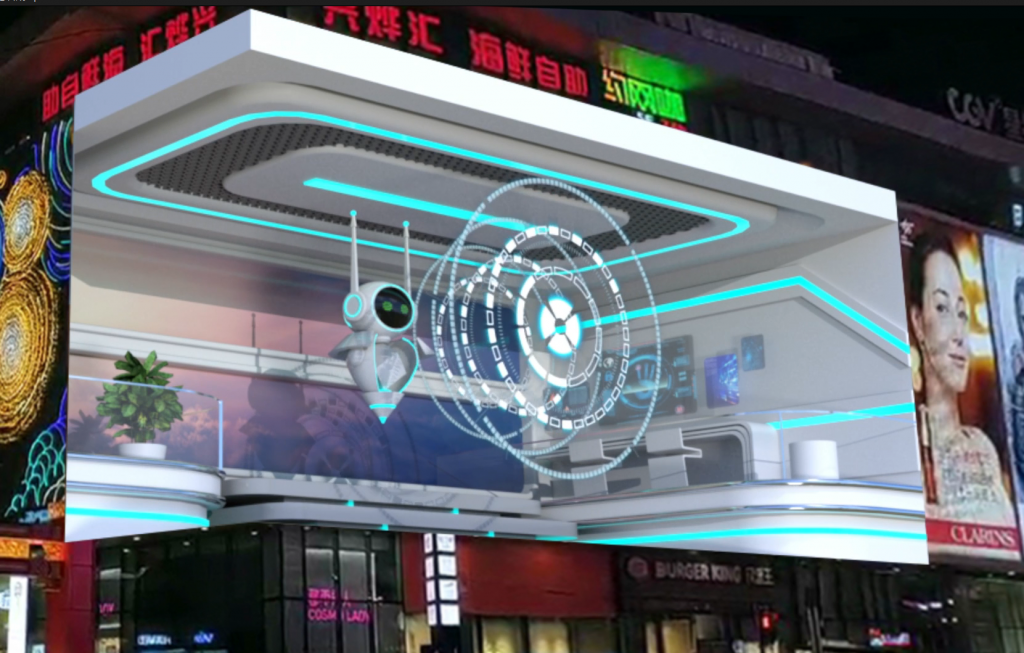The 3D LED screens has appeared frequently in recent years, making many curious, how it is realized. So what is the working principle of the 3D LED display screen? Let’s take a look at it together.
In recent years, with the rapid development of technologies such as data transmission, virtual reality, and enhancement of the world, people’s requirements for display are not only limited to 2D planes, but also hope for a more three-dimensional, higher-definition interactive visual sensory experience. Here we need to mention the 3D LED display and its working principle.
How 3D LED screens Work
As we all know, our human brain is an extremely complex nervous system. Anything that the human eye sees is three-dimensional. This is because the two eyeballs of the human eye pass through the small distance between the human eyes and see the Two pictures with subtle differences, this subtle difference allows the brain to convert the spatial coordinates between objects in the direction in which the line of sight disappears, and we can also distinguish the distance and size of objects through this feeling, that is, Three-dimensional sense, that is, the sense of three-dimensional space.

Through this visual effect, many 3D LED display cases have been created, such as the “Chongqing Guanyin Bridge Pedestrian Street Spaceship” project is a more classic case. In fact, this project has been completed and accepted in 2019. However, after delivery and operation, it was only used to play some print advertisements, not from the perspective of visual sensory experience, which made “Chongqing Guanyin Bridge Pedestrian Street” in a state of obscurity.
There are countless LED displays that have the same situation as the “Chongqing Guanyinqiao Pedestrian Street Spaceship”. Although these displays have originality in shape or appearance, they are often “obsolete because of their lackluster content and lack of visual sensory experience.” everyone.”

It has to be said that this is also the most realistic portrayal of most outdoor LED displays now. Since the emergence of the wave water tank in the Seoul neighborhood of South Korea, the “pattern” of outdoor LED displays has changed. It is understood that the ocean wave tank in Seoul, South Korea simulates the turbulent picture of the ocean waves, and gives people an immersive feeling through sound effects, light and shadow blending and other forms.
As soon as the Korean wave water tank was launched, it became an Internet celebrity, and even Chinese tourists went to South Korea to shoot this LED display. After testing the water in the wave tank, many domestic companies have launched their own LED displays with the ultimate visual sensory experience. However, this 3D display technology is actually applied in China earlier than in foreign countries.
In 2016, Beijing Juntai Department Store created a 3D effect screen. However, due to the lack of suitable visual materials, this LED display with 3D display effect has not shown what it should be.

From the wave water tank in Seoul, South Korea to the various types of naked-eye 3D displays that have recently emerged in China, it can be seen that the visual sensory experience is gradually becoming a “hard standard” in the development of LED displays.
At the same time, this trend of combining the ultimate visual sensory experience with the display screen is not only sweeping the outdoor LED display. For example, this year’s “Shendu Month, Chinese Love” 2020 Gengzi Year CCTV Mid-Autumn Festival Gala LED display pays special attention to people’s visual sensory experience.
The elements such as waterscape, rhythm, ancient buildings, and full moon are outlined and vivid, giving people an immersive experience. It is foreseeable that the entire LED display industry will gradually pay attention to the visual experience of large screens.
However, the visual sensory experience does not depend on the most spoken words, and to achieve this effect, technology and creativity are indispensable. “Chengdu Taikoo Li Spaceship” uses advanced technologies such as 90° seamless corner module technology, outdoor high-brightness wide-angle display panel technology, and high-contrast light-absorbing masks, so that the entire wall fully meets the technical requirements of naked-eye 3D.
Coupled with superb visual art, it keeps up with the trending hotspots that young people love. By simulating the picture of the spacecraft entering and leaving the space station, he successfully sent himself to the hot search.

It is understood that on October 2 alone, “Chengdu Taikoo Li Spaceship” was listed on Weibo’s national real-time hot search list TOP5, with 320 million views and 56,000 discussions. In addition, on the Douyin platform, “Chengdu Taikoo Li Spaceship” is also very popular. A single video has reached 200,000+ likes and tens of millions of views.
Through this case, we can know that people’s pursuit of vision must be creative, novel, display ingenious, and interesting in content, rather than a single boring 2D flat display. Therefore, when we carry out the scene application of the LED display, we must combine technology and creativity, and at the same time pay attention to the development of the scene. Only in this way can the visual sensory experience of the LED display be more colorful.
At the same time, it can also be known that, compared with the traditional LED large screen, the traditional outdoor display screen has become an important “landscape point” and Internet celebrity “landmark” in the city by playing advertisements, thereby increasing the vitality of the city and the influence of commercial streets. This is the development direction of LED large screen in the visual arts era.